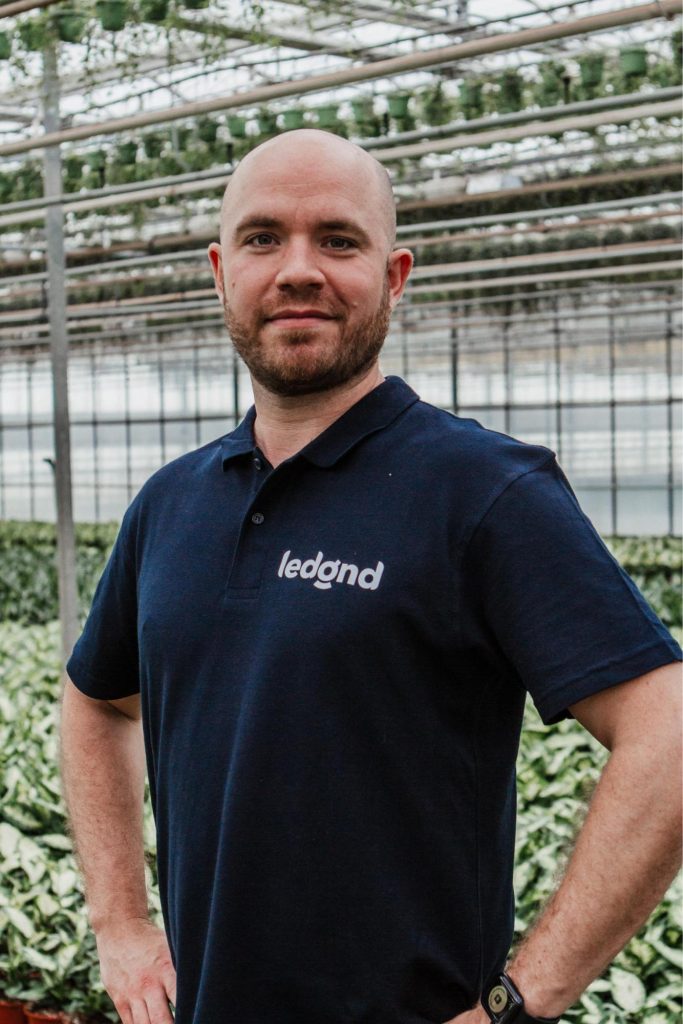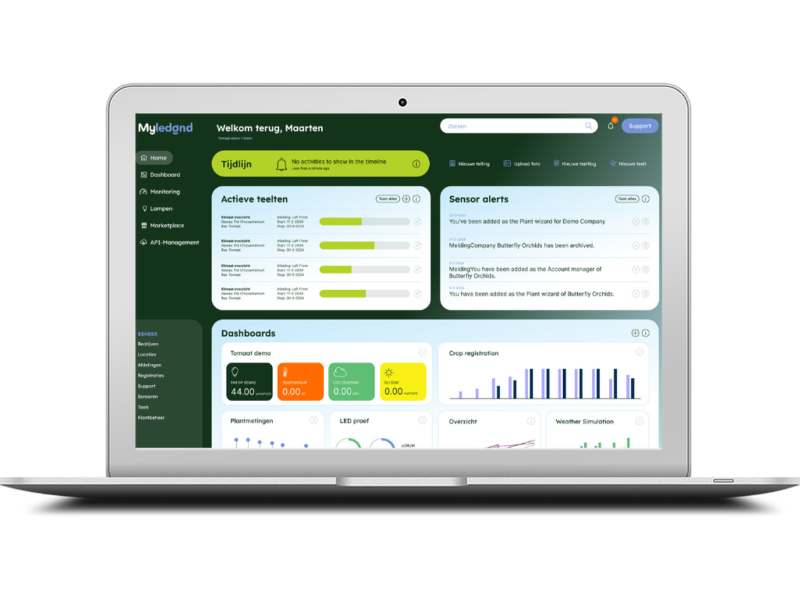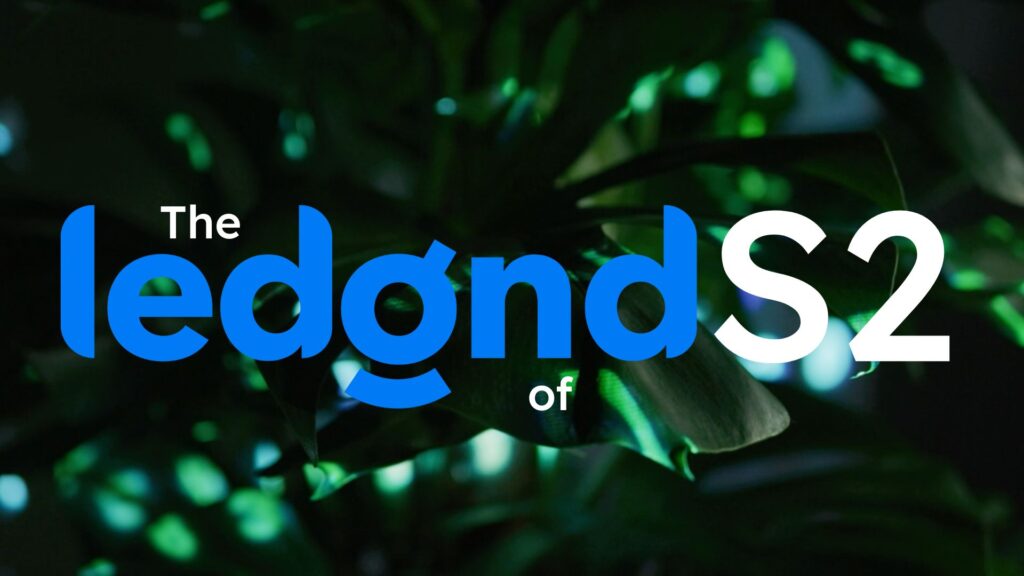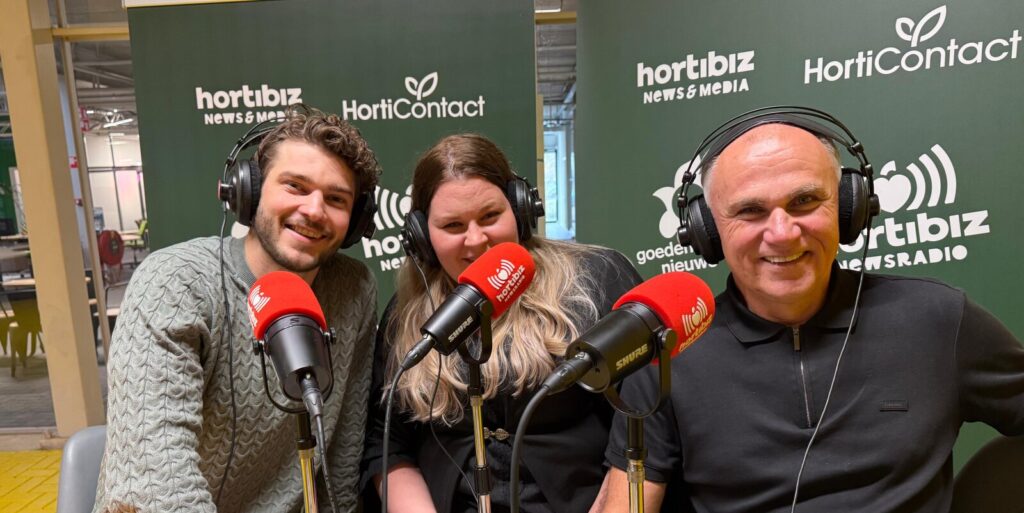Triology: The Future of Greenhouse Horticulture – Part 2 Innovative technologies
In part 2 of this triology, Maarten van Bemmel explains how MyLedgnd helps growers better manage their greenhouses with smart technology and sensors. He describes how the platform makes complex data understandable and why sharing data and educating customers is important. He also discusses the collaboration with various partners and the ongoing efforts to make the platform more user-friendly.
This triology delves into the innovative technologies that are transforming the greenhouse horticulture sector. It explores the challenges of implementing sustainable lighting solutions and how advanced technologies are helping growers optimize their greenhouses. Maarten van Bemmel, Product Owner of MyLedgnd, shares forward-thinking innovations and how these developments are empowering growers to make informed decisions.
Maarten van Bemmel explains how MyLedgnd utilizes advanced technologies to support growers. “Our platform is designed to be user-friendly, but some data, such as plant feedback, can be complex,” he says. “We use sensors that can read what a plant is saying, such as whether the plant is experiencing stress or photosynthesizing. This helps growers to optimally manage their greenhouses.”
Plug and play solution
More and more growers are open to using and applying new technologies in the greenhouse. We come from a time when dashboards were difficult to understand. “You have cool graphs, but what do you do with them? What do they mean and how do you interpret them? We help with plant physiologists to interpret the data, but the ultimate goal should be that growers can interpret and optimize most of it themselves,” Maarten explains. “We try to make MyLedgnd as plug-and-play and user-friendly as possible. But some data, especially when you talk about plant feedback data, can be quite complex. There are sensors that can read what a plant is saying, such as whether it is experiencing stress or photosynthesizing. You then have to interpret this, and for some growers, this is a piece of cake, but for others, it is quite high-tech.’ This is where the educational role comes back. “We essentially train the grower so that they can then work with the data themselves.”

For measurements, Ledgnd collaborates with various partners. “We work with third-party sensors. It doesn’t matter to us which sensors a grower already has or wants to use, as long as they add value. If a sensor helps achieve the grower’s objectives, such as optimizing yield or saving energy, then we recommend it.”
Sharing data is a barrier
One of the biggest challenges in the market is convincing growers to share their data. “In Europe, it is already quite open, but in other parts of the world, it is more closed,” says Maarten. “To win in this game, you need to optimize and start sharing your data, at least with your advisor.”
Understanding data easily leads to better decision-making
Maarten explains that the MyLedgnd platform is designed to help growers interpret complex data. “We want growers to be confident in their decisions. This means that we not only provide them with the tools to collect data but also to understand and use this data. This is where our expertise in plant physiology really comes in handy.”
MyLedgnd is working hard to improve the user experience and engage their customers. “Optimization is a continuous process,” emphasizes Maarten. Ledgnd has been working diligently over the past few months on a completely new interface and design. “We have worked on an entirely new design and are continuously integrating more partners, such as camera systems. We want growers to be able to easily add new sensors themselves through a plug-and-play system. We are also investing in API management, so growers can create and disconnect connections with sensor providers and climate computers on their own. Our goal is to make the platform as user-friendly as possible.”
Future-Proof with MyLedgnd
Want to learn more about how MyLedgnd can make you future-proof as a grower? Try MyLedgnd for 14 days for free and discover how you can easily start working with data.

New articles

Ledgnd launches season 2 of video series “The Ledgnd of”
Ledgnd has launched the second season of its video series “The Ledgnd of”. The series takes a closer look at the key concepts and innovations shaping modern greenhouse horticulture. In the new season,…

Ledgnd at Hortibiz Next Level Data: From data to action
During the theme week “Next Level Data, Artificial Intelligence and Robotics” by Hortibiz News Radio, Ledgnd joined the table to talk about one key question: how do you turn all greenhouse data back i…

Duijvestijn, Ledgnd and Gavita International continue collaboration on LED optimization
Following the success of the first LED optimization trial at Duijvestijn Tomaten in Pijnacker, Duijvestijn, Ledgnd and Gavita International are launching a second research phase to be conducted over t…
Read more

Ledgnd launches season 2 of video series “The Ledgnd of”
Ledgnd has launched the second season of its video series “The Ledgnd of”. The series takes a closer look at the key concepts and innovations shaping modern greenhouse horticulture. In the new season,…

Ledgnd at Hortibiz Next Level Data: From data to action
During the theme week “Next Level Data, Artificial Intelligence and Robotics” by Hortibiz News Radio, Ledgnd joined the table to talk about one key question: how do you turn all greenhouse data back i…

Duijvestijn, Ledgnd and Gavita International continue collaboration on LED optimization
Following the success of the first LED optimization trial at Duijvestijn Tomaten in Pijnacker, Duijvestijn, Ledgnd and Gavita International are launching a second research phase to be conducted over t…
Do you want to know more?
Interested in what Ledgnd can do for you? Leave your phone number, and we will contact you as soon as possible for a non-binding informational conversation

